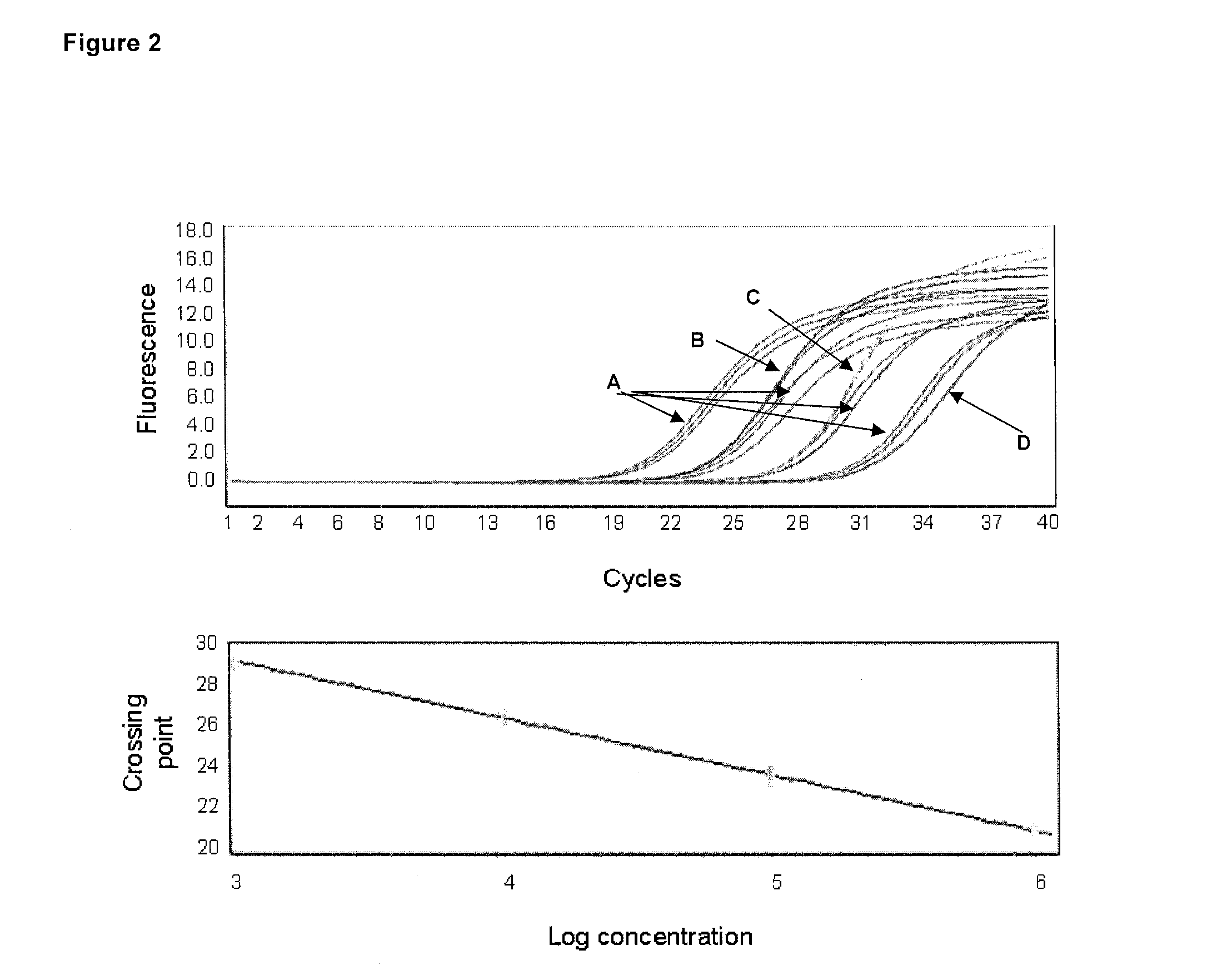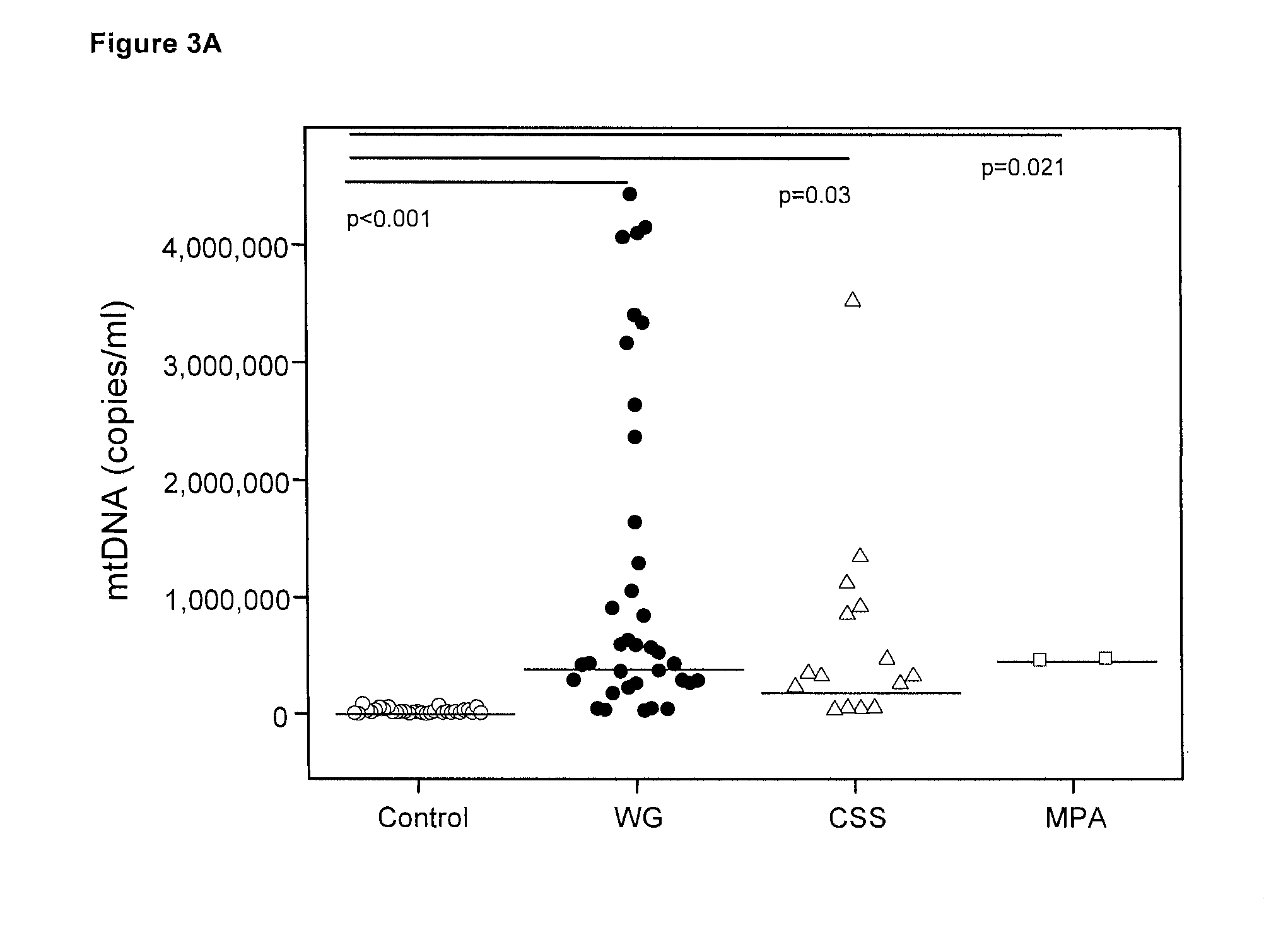Mitochondrial nucleic acid as a marker for autoimmune and autoinflammatory diseases
- Summary
- Abstract
- Description
- Claims
- Application Information
AI Technical Summary
Benefits of technology
Problems solved by technology
Method used
Image
Examples
example 1
ANCA-Associated Vasculitis (AAV)
[0206]Methods
[0207]Patients with AAV and Controls
[0208]After ethics committee approval, subjects willing to provide signed written consent were consecutively recruited from July 2010 until March 2011. This study included adult patients attending the Freiburg and Basel Departments of Rheumatology that were classified as AAV (WG, CSS or MPA)15. Exclusion criteria consisted of active bacterial or viral infections, trauma, malignancy, recent surgery, as well as concomitant other systemic AID (e.g. rheumatoid arthritis or inflammatory bowel disease)16,17.
[0209]Healthy adult volunteers and subjects hospitalized for osteoporotic spine fractures or herniated intervertebral disks without concomitant inflammatory disease, as also evidenced by a normal C-reactive protein (CRP), served as controls.
[0210]In all subjects 9 ml of venous peripheral blood was collected in an EDTA tube (Sarstedt, Nümbrecht, Germany). Immediately after blood withdrawal, the EDTA-blood w...
example 2
Systemic Lupus Erythematosus
[0245]Systemic lupus erythematosus (SLE) is an AID characterized by B-cell activation and autoantibody production against a variety of autoantigens. Another key characteristic of SLE consists of the presence of chronically activated plasmacytoid dendritic cells, which secrete type I interferons, such as IFN-alpha. Autoantibodies are also formed against cellular blood components and lead to anemia, thrombopenia, lymphopenia and neutropenia. Viral infections trigger immune responses via recognition of viral DNA through TLR9 in endosomes29. Characteristically, SLE disease flares are associated with a rise in circulating autoantibodies against double stranded DNA (anti-dsDNA autoantibodies). It has recently been demonstrated that sera of SLE patients contain antibody and non-antibody inhibitors which impair NET-degradation by DNAse in vitro30 and that the lack of extracellular DNAse is associated with a SLE phenotype31,32. The formation of NETs in SLE patient...
example 3
Systemic Sclerosis
[0250]Systemic sclerosis (SSc, scleroderma) is a severe AID with multiorgan involvement. The pathogenesis of SSc is poorly understood. SSc leads to fibrotic changes in skin and many organs, but already in early disease stages a pronounced microangiopathy can be detected with endothelial cell activation and consecutive apoptosis36. Toll like receptor 3 (TLR3) participates in endothelial cell activation and TLR3 stimulation has recently been shown to activate dermal fibrosis37,38, whereas TLR9 and neutrophilic granulocytes have not been found to have a central role in the pathogenesis of SSc so far36. In a small cohort of patients with SSc (n=4), we found substantially elevated levels of circulating mtDNA in the plasma (FIG. 7).
PUM
| Property | Measurement | Unit |
|---|---|---|
| Concentration | aaaaa | aaaaa |
Abstract
Description
Claims
Application Information
 Login to View More
Login to View More - Generate Ideas
- Intellectual Property
- Life Sciences
- Materials
- Tech Scout
- Unparalleled Data Quality
- Higher Quality Content
- 60% Fewer Hallucinations
Browse by: Latest US Patents, China's latest patents, Technical Efficacy Thesaurus, Application Domain, Technology Topic, Popular Technical Reports.
© 2025 PatSnap. All rights reserved.Legal|Privacy policy|Modern Slavery Act Transparency Statement|Sitemap|About US| Contact US: help@patsnap.com



